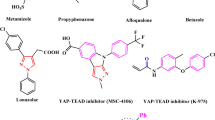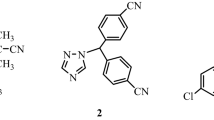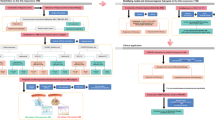Abstract
Aim:
Hypericin (Hyp) and its radio-derivatives have been investigated in animal models with ischemic heart diseases and malignancies for diagnostic and therapeutic purposes. Before radioiodinated Hyp (123I-Hyp or 131I-Hyp) can be considered as a clinically useful drug, vigorous evaluations on its chemotoxicity are necessary. In the present study, we examined the toxicity of a single dose of non-radioactive 127I-Hyp in normal mice for 24 h and 14 d.
Methods:
Studies were performed on 132 normal mice. 127I -Hyp at a clinically relevant dose of 0.1 mg/kg body weight and a 100-times higher dose of 10 mg/kg was intravenously injected into 40 mice. The safety aspects of clinical manifestations, serological biochemistry, and histopathology were assessed. In another 72 mice, 127I-Hyp was administered intravenously at assumed values to bracket the value of LD50. The rest 20 mice were used in the control groups.
Results:
At 24 h and 14 d following the injection of 127I -Hyp at either 0.1 or 10 mg/kg, all mice tolerated well without mortality or any observable treatment-related symptoms. No significant differences were found in blood biochemical parameters between the test and control groups. All organs presented normal appearances upon histopathological inspection. The value of LD50 of 127I-Hyp in mice through intravenous injection was 20.26 mg/kg, with the 95% confidence interval between 18.90 and 21.55 mg/kg.
Conclusion:
The current study reveals a broad safety range of 127I-Hyp, which not only supports the use of 123I-Hyp or 131I-Hyp in the necrosis targeting theragnostic strategy, but also serves as a valuable reference for exploring other possible applications for iodinated Hyp.
Similar content being viewed by others
Log in or create a free account to read this content
Gain free access to this article, as well as selected content from this journal and more on nature.com
or
References
Hölzl J, Ostrowski E . Analysis of the Essential Compounds of Hypericum perforatum. Planta Med 1986; (6): 531.
Tammaro F, Xepapadakis G . Plants used in phytotherapy, cosmetics and dyeing in the Pramanda district (Epirus, North-West Greece). J Ethnopharmacol 1986; 16: 167–74.
Crak C, Radusiene J, Janulis V, Ivanauskas L . Secondary metabolites in Hypericum perfoliatum: variation among plant parts and phenological stages. Bot Helv 2007; 117: 29–36.
Diasa ACP, Seabrab RM, Andradeb PB, Ferreresc F, Fernandes-Ferreiraa M . Xanthone biosynthesis and accumulation in calli and suspended cells of Hypericum androsaemum. Plant Sci 2000; 150: 93–101.
Karioti A, Bilia AR . Hypericins as potential leads for new therapeutics. Int J Mol Sci 2010; 11: 562–94.
Marysael T, Ni Y, Lerut E, de Witte P . Influence of the vascular damaging agents DMXAA and ZD6126 on hypericin distribution and accumulation in RIF-1 tumors. J Cancer Res Clin Oncol 2011; 137: 1619–27.
Kubin A, Wierrani F, Burner U, Alth G, Grünberger W . Hypericin — the facts about a controversial agent. Curr Pharm Des 2005; 11: 233–53.
Agostinis P, Vantieghem A, Merlevede W, de Witte PA . Hypericin in cancer treatment: more light on the way. Int J Biochem Cell Biol 2002; 34: 221–41.
Head CS, Luu Q, Sercarz J, Saxton R . Photodynamic therapy and tumor imaging of hypericin-treated squamous cell carcinoma. World J Surg Oncol 2006; 4: 87.
Kubin A, Wierrani F, Burner U, Alth G, Grünberger W . Hypericin — the facts about a controversial agent. Curr Pharm Des 2005; 11: 233–53.
Ni Y, Huyghe D, Verbeke K, de Witte PA, Nuyts J, Mortelmans L, et al. First preclinical evaluation of mono-[123I]iodohypericin as a necrosis-avid tracer agent. Eur J Nucl Med Mol Imaging 2006; 33: 595–601.
Ni Y, Bormans G, Chen F, Verbruggen A, Marchal G . Necrosis avid contrast agents: functional similarity versus structural diversity. Invest Radiol 2005; 40: 526–35.
Li J, Chen F, Cona MM, Feng Y, Himmelreich U, Oyen R, et al. A review on various targeted anticancer therapies. Target Oncol 2012; 7: 69–85.
Fonge H, Vunckx K, Wang H, Feng Y, Mortelmans L, Nuyts J, et al. Non-invasive detection and quantification of acute myocardial infarction in rabbits using mono-[123I]iodohypericin microSPECT. Eur Heart J 2008; 29: 260–9.
Li J, Sun Z, Zhang J, Shao H, Cona MM, Wang H, et al. A dual-targeting anticancer approach: soil and seed principle. Radiology 2011; 260: 799–807.
Van de Putte M, Wang H, Chen F, de Witte PA, Ni Y . Hypericin as a marker for determination of tissue viability after intratumoral ethanol injection in a murine liver tumor model. Acad Radiol 2008; 15: 107–13.
Van de Putte M, Wang H, Chen F, De Witte PA, Ni Y . Hypericin as a marker for determination of tissue viability after radiofrequency ablation in a murine liver tumor model. Oncol Rep 2008; 19: 927–32.
Marysael T, Bauwens M, Ni Y, Bormans G, Rozenski J, de Witte P . Pretargeting of necrotic tumors with biotinylated hypericin using 123I-labeled avidin: evaluation of a two-step strategy. Invest New Drugs 2011. doi: 10.1007/s10637-011-9778-2.
Van de Putte M, Ni Y, De Witte PA . Exploration of the mechanism underlying the tumor necrosis avidity of hypericin. Oncol Rep 2008; 19: 921–6.
Fox E, Murphy RF, McCully CL, Adamson PC . Plasma pharmacokinetics and cerebrospinal fluid penetration of hypericin in nonhuman primates. Cancer Chemother Pharmacol 2001; 47: 41–4.
Leuschner J . Gutachten zur experimentellen Toxikologie von Hypericum-Extract LI 160. Berlin: Lichtwer Pharma GmbH. 1995.
Gulick RM, McAuliffe V, Holden-Wiltse J, Crumpacker C, Liebes L, Stein DS, et al. Phase I studies of hypericin, the active compound in St. John's wort, as an antiretroviral agent in HIV-infected adults. AIDS Clinical Trials Group Protocols 150 and 258. Ann Intern Med 1999; 130: 510–4.
Cui Y, Liang J, Luo Y, Wang X, Zhu Y, Shang R, et al. Acute toxicity tests of extractum hypericin. Chin J Vet Drug 2005; 39: 19–20.
Stowell RE . Effect on tissue volume of various methods of fixation, dehydration, and embedding. Biotechnic & Histochemistry 1941; 16: 67–83.
Watanabe N, Yokoyama K, Kinuya S, Shuke N, Shimizu M, Futatsuya R, et al. Radiotoxicity after iodine-131 therapy for thyroid cancer using the micronucleus assay. J Nucl Med 1998; 39: 436–40.
Narra VR, Howell RW, Harapanhalli RS, Sastry KS, Rao DV . Radiotoxicity of some iodine-123, iodine-125 and iodine-131-labeled compounds in mouse testes: implications for radiopharmaceutical design. J Nucl Med 1992; 33: 2196–201.
Shapiro B, Sisson JC, Wieland DM, Mangner TJ, Zempel SM, Mudgett E, et al. Radiopharmaceutical therapy of malignant pheochromocytoma with [131I]metaiodobenzylguanidine: results from ten years of experience. J Nucl Biol Med 1991; 35: 269–76.
Order SE, Stillwagon GB, Klein JL, Leichner PK, Siegelman SS, Fishman EK, et al. Iodine 131 antiferritin, a new treatment modality in hepatoma: a Radiation Therapy Oncology Group study. J Clin Oncol 1985; 3: 1573–82.
Vincek V, Nassiri M, Nadji M, Morales AR . A tissue fixative that protects macromolecules (DNA, RNA, and protein) and histomorphology in clinical samples. Lab Invest 2003; 83: 1427–35.
Finney DJ. Ed. Probit Analysis. Cambridge, England, Cambridge University Press 1952.
Finney DJ, Stevens WL . A table for the calculation of working probits and weights in probit analysis. Biometrika 1948; 35: 191–201.
Song S, Xiong C, Zhou M, Lu W, Huang Q, Ku G, et al. Small-animal PET of tumor damage induced by photothermal ablation with 64Cu-bis-DOTA-hypericin. J Nucl Med 2011; 52: 792–9.
http://www.livestrong.com/article/107004-hypericin-side-effects/
Luksiene Z, de Witte PA . Hypericin as novel and promising photodynamic therapy tool: studies on intracellular accumulation capacity and growth inhibition efficiency. Medicina (Kaunas) 2003; 39: 677–82.
Nagao Y, Sata M . Serum albumin and mortality risk in a hyperendemic area of HCV infection in Japan. Virol J 2010; 7: 375.
Onusko E . Statins and elevated liver tests: what's the fuss? J Fam Pract 2008; 57: 449–52.
Li J, Cona MM, Chen F, Feng Y, Yu J, De witte P, et al. Exploring theranostic potentials of radioiodinated hypericin in rodent necrosis models. Theranostics 2012; 2: 1010–9.
Acknowledgements
This work was partially supported by the grants awarded by FWO Vlaanderen ZWAP/05/018; Geconcerteerde Onderzoeksactie of the Flemish Government, OT project (OT/06/70); the KU Leuven Molecular Small Animal Imaging Center MoSAIC (KUL EF/05/08); the center of excellence In vivo Molecular Imaging Research (IMIR) of KU Leuven; the IWT SBO 'Imagine' (SBO80017) and an EU project Asia-Link CfP 2006-EuropeAid/123738/C/ACT/Multi-Proposal No 128-498/111. The corresponding author, Yi-cheng NI, is currently a Bayer Lecture Chair holder.
Author information
Authors and Affiliations
Corresponding author
Rights and permissions
About this article
Cite this article
Li, Jj., Cona, M., Feng, Yb. et al. A single-dose toxicity study on non-radioactive iodinated hypericin for a targeted anticancer therapy in mice. Acta Pharmacol Sin 33, 1549–1556 (2012). https://doi.org/10.1038/aps.2012.111
Received:
Accepted:
Published:
Issue date:
DOI: https://doi.org/10.1038/aps.2012.111
Keywords
This article is cited by
-
Radioiodinated Hypericin: Its Biodistribution, Necrosis Avidity and Therapeutic Efficacy are Influenced by Formulation
Pharmaceutical Research (2014)



